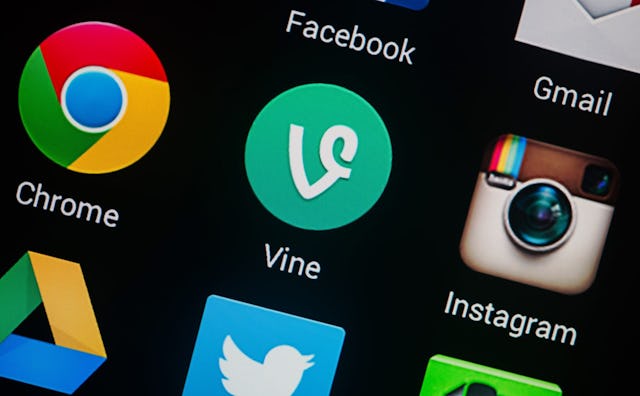Tween Tech: What Parents Need To Know About Instagram And Vine

This is part of a series, “Tween Tech,” which explores social media apps commonly used by our children. In it, we look at the ways tweens and teens typically interact through these apps, how parents can monitor their usage, and the related risks of each. This installment covers the widely used photo-and-video-sharing apps Instagram and Vine. In other installments, we looked at Snapchat and Jott.
What it is: Instagram (owned by Facebook) is a popular app that allows users to share photos and videos. Twitter-owned Vine is a similar app for sharing short video clips.
Why it’s popular for teens and tweens: Instagram (often called just Insta) and Vine appeal to kids for the same reasons they appeal to adults: sharing photos and videos is a free, easy, fun form of self-expression and features like filters make it easy to add flair. Many kids are also drawn to the validation they get from racking up followers, likes and comments.
Why it’s important: Many parents who don’t allow their tweens on Facebook see Insta and Vine as safer outlets. While this may be true when used with supervision, most parents I spoke with were unaware of many of the more troublesome issues with these apps, including bullying, location tagging and exposure to questionable content.
How many kids are using it: The Pew Research Center reports that 52 percent of teens (13 to 17) use Instagram and 24 percent use Vine. While we know anecdotally that tweens are using these apps, because users are supposed to be 13 to register, there’s no way to track underage use.
How kids are using it: Kids are sharing anything that can be photographed or recorded, from photos of pets and pizza to selfies (lots of selfies!) to handwritten notes. One writer for The Washington Post reported being surprised that her 12-year-old and her friends were sharing class schedules via Instagram. Because almost anything can be captured in a photo, shared and commented on, Insta in particular has become as much of a social network as Facebook.
How parents can monitor it: First, if your under-13-year-old has an iPhone (or even a Wi-Fi enabled iPod, as mine does), you can tie their account to yours under the “Family Sharing” settings in iTunes. With these settings, kids must get approval to download apps, so if you want to keep your child off Instagram or Vine, that’s the best option.
If you do decide to let them have an account, your best bet is to ask them to set the account to “private” (which means each follower has to be approved), discuss what information they’re allowed to post in their profile (for example, their real name and bio info), and have them turn location services off. You’ll want to follow them and check in frequently on what they’re posting and the comments on their posts.
Why parents can relax, a little bit: If your kids keep their accounts private and you follow them and keep an eye on what’s being posted and said in the comments, Insta is probably OK for teens and mature tweens. Vine offers some additional challenges (see below), so if your child is really into video, it might be best to limit them to Instagram. (Note that iTunes rates Vine 17+ versus 12+ for Insta due to mature content.)
Why parents should worry: Both sites leave kids vulnerable to bullying, overt (nasty comments) and subtle (seeing photos or video of a party they were excluded from), and both place an emphasis on popularity—the more followers and likes, the better.
Both contain content many parents would object to, and on Vine, that content is not only easier to find, it’s available for anyone to see, app or no app. So just because you don’t allow your child to download the app or sign up for an account, don’t think that means they aren’t seeing the videos. Several kids in my daughter’s group of rising sixth graders regularly text her links to Vine videos.
With either, you’ll want to keep tabs on who’s following your child (and whom they follow) and make sure they aren’t including location data in their posts, either automatically or in their descriptions and hashtags. As with Snapchat, predators often look for potential victims through these apps. Make sure they understand that the images they post could be seen by anyone, even if their account is private—anyone can view an Insta image if given a direct link, and of course, no one can prevent screenshots from being taken and distributed.
It’s important to note that users can also look at any page that is public without actually following it. At some schools (both middle and high), students have started anonymous Instagram pages to document the “ugliest” or “most hated” kids and teachers in the school, posting pictures taken without the targets’ knowledge. In this way, a child can be bullied and/or participate in bullying without a parent knowing about it at all.
Finally, both apps have some version of direct messaging. Users have limited control over who can send them messages (Vine’s actually a little better in this regard), but it is possible for your kid to get a private message from someone who is not an approved follower—another feature parents need to know about and check on.
Insta and Vine can be fun outlets for self-expression and connection, but as with all social media, it’s essential to maintain a dialogue with your tween about what is and isn’t acceptable behavior online and ensure you’re staying on top of what they’re doing, especially for tweens and younger teens.
This article was originally published on